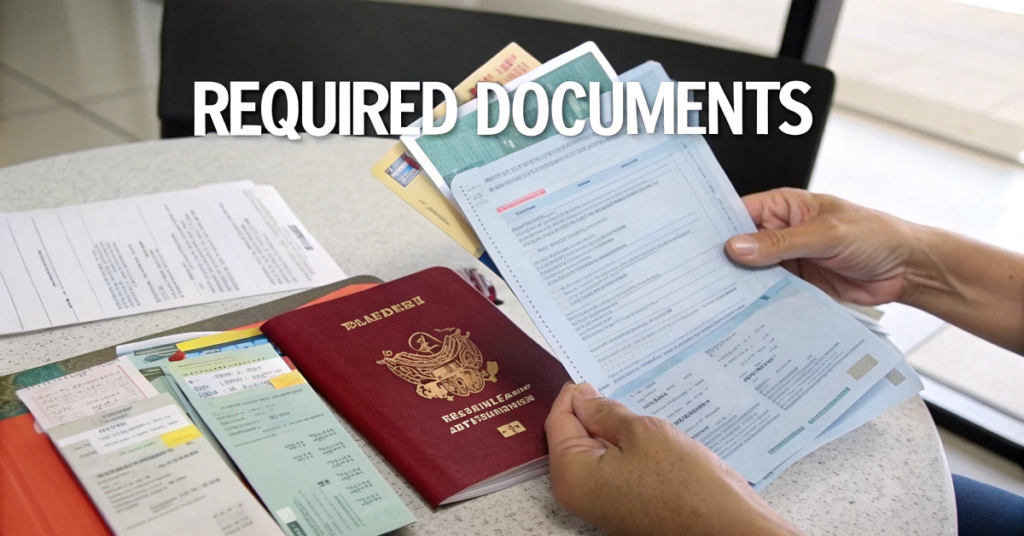Imagine this: You’re in Rome, ready to see the Colosseum. Suddenly, you trip on a stone and end up in a hospital. This happened to me, and my travel insurance paid the bill, highlighting the importance of having the best travel insurance for European trips. It saved me a lot of trouble about such things on your Europe trip. I understand. I use travel insurance on all my trips because Europe can have very high healthcare costs. Trips get cancelled, and luggage gets lost. Travel insurance is not optional; it’s a must-have for safe and worry-free travel.
This guide will help you choose the right travel insurance. I will explain the key points, list good providers, and share tips about claims. You can travel to Europe without worry, well-prepared, and safe.
Why You Need the Best Travel Insurance for European Trips
Choosing the best travel insurance for European trips is very important, as you plan for your travel to Europe. You need a plan to manage the unexpected. If you do not have a good plan, you may have to pay a lot of money or have your travel affected in unwanted ways. When you are in Europe and unexpected things happen, the best travel insurance for European trips can offer support and financial aid. This is why having a good plan before you go is important. Make sure you do not leave home without considering all of your travel insurance options.
Key Factors to Consider When Choosing the Best Travel Insurance for European Trips
Choosing the best travel insurance for European trips can feel complicated, but you can make it easy by focusing on these key factors. If you need to do further research, you may want to check out this helpful guide about choosing travel insurance.

Coverage Options
Your insurance must cover potential risks. Check the coverage details carefully. It is important to understand all your options before choosing your best travel insurance for European trips.
Medical Coverage
Medical problems can occur unexpectedly. Good medical coverage is vital. It should include:
- Coverage for doctor visits when you feel unwell.
- Coverage for your hospital stays, including direct billing so you don’t have to pay upfront.
- Coverage for emergency medical evacuation if you are taken to a different hospital or return home.
Choose high coverage limits. Healthcare in Europe can be very expensive. For example, choose at least $100,000 coverage. Also, check coverage for your pre-existing medical conditions, as some policies may exclude these, requiring special coverage. Knowing your options for medical coverage will assist you in finding the best travel insurance for European trips.
Trip Cancellation/Interruption Coverage
Sometimes things happen, and you may need to cancel or cut short your trip. This coverage can help. It should cover:
- Your illness or injury, or the illness of a close family member.
- Death of a close family member.
- Natural disasters that change your trip.
- Other unexpected events, such as jury duty or airline strikes.
Understand the limits and keep all documentation for reimbursement, like doctor’s notes or receipts. With the right trip cancellation coverage, you can rest easy knowing your best travel insurance for European trips will cover all your bases.
Lost/Stolen Luggage Coverage
Losing your luggage can be frustrating. This coverage will help you pay for replacements.
- This policy covers personal items, clothing, and electronics. There might be limits for jewellery or very expensive electronics.
- You will need a police report for stolen luggage and keep proof of purchase for all items.
Tips to prevent loss:
- Take photos of your luggage before you travel.
- Use luggage trackers.
- Keep valuables in your carry-on bag.
- Keep copies of your passport separate from your passport.
Emergency Assistance
When something happens, you need immediate help. Look for policies with:
- A 24/7 helpline to call for any issue at any time.
- Emergency medical evacuation services with staff that speak your language.
- Access to translation services.
Policy Cost/Premiums
Travel insurance costs vary depending on:
- Your age.
- How much coverage do you need?
- How long your trip is?
- Where in Europe are you travelling?
- Any pre-existing conditions you may have.
Tips to reduce costs:
- Compare quotes from various companies.
- Adjust your coverage limits.
- Consider an annual policy if you travel often.
Do not choose a cheap policy that does not provide sufficient coverage. Choosing the best travel insurance for European trips does not have to break the bank, but it does mean that you have to do your homework and not pick the cheapest option.

Provider Reputation
The insurance company is as important as the policy. You need a company you can trust. Look for a provider with:
- Good ratings from organisations like AM Best or Standard & Poor’s.
- Excellent reviews from other travellers.
- Recommendations from family or friends who have used travel insurance before.
Read reviews about claim processing and look for comments about customer service. It is through these steps that you will find your best travel insurance for European trips.
Exclusions and Limitations
Policies do not cover everything. You must know these exclusions before you buy a policy. Common exclusions include:
- Injuries from extreme sports.
- Loss of unattended luggage.
- Problems from travel against your doctor’s advice.
- Acts of war or terrorism.
- Injuries from being drunk.
Carefully read the policy and contact the provider if you have questions. When considering the best travel insurance for European trips, it is important to know exactly what is covered and what is not.
Top Travel Insurance Providers for European Trips (with Examples)
Through my travels, I have researched various insurance companies. I recommend a few based on service, cost, and coverage. I encourage you to explore these and others before making a choice. Policy details may change, so always check directly with the insurance provider before you buy. If you want to find many travel insurance providers at once, you may want to explore this comparison website. Many have used these sites to find their best travel insurance for European trips.
World Nomads
This provider is popular among adventure travellers, offering plans for long trips and many activities.
Key Features:
- Good coverage for adventure activities such as hiking, skiing, and scuba diving.
- 24/7 help in emergencies.
- Policies that can be extended or modified easily.
European travel options:
- Insurance that meets Schengen visa requirements.
- Good coverage in many European countries. Check your specific travel details.
Pros:
- Good coverage, especially for adventure activities.
- Good options that can be changed on the road.
- A website that is easy to use.
Cons:
- It can cost more than a basic plan.
- Coverage may be limited for some pre-existing conditions.
You should always choose a plan that meets your individual needs and make sure it is the best travel insurance for European trips.
Allianz Travel Insurance
This company is a well-known provider, offering original plans for any budget with wonderful service.
Key Features:
- Many plans.
- Direct billing arrangements with many hospitals in Europe.
- Good coverage if your trip gets cancelled or interrupted.
European travel options:
- Good medical coverage with a wide range of limits.
- Rental car coverage.
Pros:
- Many plan options to suit your individual needs.
- They are reliable and well-known.
- They have good prices for basic coverage.
Cons:
- Adventure coverage may be limited.
- Too many plan options can feel overwhelming.
Travel Guard
This provider provides good overall coverage and may offer options for pre-existing conditions.
Key Features:
- Good overall coverage options.
- Pre-existing condition options.
- 24/7 emergency help.
European travel options:
- Insurance that meets Schengen visa requirements.
Pros:
- Comprehensive coverage options.
- Potentially good prices.
Cons:
- This provider may not be as well known as others.
- A careful review is needed to find good coverage for you.
Add 1-2 more providers. Use the same format. I hope this section will help you find the best travel insurance for European trips.
Understanding the Claim Process
Knowing how to file a claim will help you. It’s important to understand this before your trip. For more details on what to expect when making a claim, see this guide from TravelInsurance.com.

Steps Involved in Filing a Travel Insurance Claim
- Gather Your Documents: Get all documents. What you need will vary by claim type:
- For Medical Claims:
- Reports from the doctor.
- All medical bills and receipts.
- Proof of your payments.
- Your travel insurance policy.
- For Trip Cancellation Claims:
- Documents that show why you had to cancel or interrupt your trip.
- Your travel itinerary.
- Cancellation rules for airlines or hotels.
- For Lost Luggage Claims:
- A police report for any stolen items.
- A report from your airline for any lost luggage.
- Any proof you own the lost items?
- A list of all lost items with their value.
- For Medical Claims:
- Contact the Provider: Call your provider as soon as you can and get a claim number for future use.
- Submit Your Claim: Complete the claim form, include all documents, and submit everything as instructed.
- Track Your Claim: Check the status regularly, and contact the provider to ask about your claim.
- Provide More Details: Be prepared to give them more details if needed.
Tips for a Smooth and Successful Claim Process
- Carefully read your insurance policy to understand what is covered.
- Keep detailed records of all documents, from your receipts to your communications.
- File your claim as soon as possible, because some policies have deadlines.
- Be completely honest when you file your claim.
- Keep all documents well organised.
- When you talk with the provider, be clear and professional. Keep a record of communications.
- If the provider denies your claim, you have the right to understand why and appeal.
Destination-Specific Considerations (Europe)
Europe is safe for travel. However, be aware of these considerations to ensure a pleasant trip. You may also want to read about European travel from the official European Union website: https://european-union.europa.eu/index_en Finding the best travel insurance for European trips also means knowing about all of the specific needs you may have.

Schengen Area and Insurance Requirements
The Schengen Area is a group of countries with no border checks. If you need a Schengen visa, your travel insurance must meet certain rules. It must have:
- Medical coverage that is at least €30,000.
- Coverage for your whole time in the Schengen area.
- Coverage in all Schengen countries.
- Coverage for medical repatriation.
It is still recommended to have insurance that meets these requirements, even if you do not need a visa, since healthcare in Europe can be very costly. Remember to always review the policy to make sure it meets your specific requirements and to ensure that you have the best travel insurance for European trips.
Common Scams and How to Protect Yourself
Scams can happen in Europe. Be careful and avoid these common scams:
- Be careful of pickpockets. Use secure bags and do not keep valuables in easy reach.
- Do not agree to take friendship bracelets from strangers.
- Ignore anyone who asks you to sign petitions in busy public areas.
- Do not buy rings that strangers claim to find, as these are often fake.
- Only use taxis that are licensed, and ensure the meter is running. Use ride-sharing services if available.
- Be careful with ATMs, check for any signs of tampering, and keep the keypad covered.
General Safety Tips:
- Pay attention to your surroundings at all times.
- Avoid dark, unsafe areas, especially at night.
- Do not display expensive jewellery or electronics.
- Keep all valuables safe and hidden.
- Be cautious when strangers approach you.
Local Health Concerns and Vaccination Recommendations
Europe has good hygiene and sanitation, but consider these health issues:
- Tap water is usually safe. Check with locals or hotels to be sure. Eat at excellent restaurants and avoid questionable street food.
- Protect yourself from the sun. Use sunscreen and wear sunglasses and a hat.
- Ticks carry disease. If you are hiking, use insect repellent, wear long sleeves and pants, and check for ticks when you come inside.
- Talk to your doctor about recommending vaccines. Usually, MMR, Tdap, and chickenpox vaccines are recommended. You may also need hepatitis A, hepatitis B, rabies, or flu vaccines.
Traveller’s diarrhoea is common. Wash your hands often and consider packing anti-diarrheal medication. Make sure your best travel insurance for European trips will cover you if you have any of these health problems.
I am an AI Chatbot and cannot provide medical advice. Consult with a doctor before you travel.
Customer Support and Assistance
Good customer support is important. It helps a lot when problems arise. For additional information, see this guide about travel insurance customer service.
The Importance of Reliable Customer Support
A good customer support service acts like your lifeline and can assist with:
- Helping you understand your policy.
- Helping you file your claims.
- Assisting with finding medical help.
- Providing help in emergencies.
- Providing translation services when needed.
What to Look for in a Good Customer Support System
When you review providers, look for:
- Customer support is available, 24/7.
- There are multiple ways to contact them, like phone, email, and chat.
- Support in your language.
- Fast responses.
- Helpful and knowledgeable staff.
- Help with filing claims.
24/7 Emergency Assistance
A critical part of travel insurance is 24/7 emergency help, which provides:
- Help with medical evacuation.
- Help with the return of remains if needed.
- A medical concierge.
- Help with other travel needs.
Check your policy to learn about its emergency help services. When you choose the best travel insurance for European trips, make sure they have a 24/7 support line.

Conclusion
When you plan your European trip, remember that travel insurance is your safety and security. I know this from experience. From a twisted ankle to a cancelled trip, travel insurance makes problems smaller, and a little preparation can save a lot of trouble.
When choosing the best travel insurance for European trips, consider:
- Coverage options and limits.
- Cost and premiums.
- The company’s reputation and reviews.
- Any limitations to coverage.
- Customer support services.
Do your research and choose the insurance that is best for you. Before your trip, get a travel insurance quote. You can also check if your credit card or health policy has travel benefits. Travel smart, travel safely, and enjoy your European adventure! To ensure you have the best travel insurance for European trips, check all these options carefully.
FAQs about the best travel insurance for European trips
What’s the most important thing my travel insurance should cover for Europe?
Medical emergencies are key. Look for a plan with high limits for hospital stays and medical evacuation.
How much does good travel insurance for European trips usually cost?
It varies, but budget for a policy that balances cost with good medical and cancellation coverage. It should not be the cheapest, but the best.
What if I need to cancel my trip last minute? Can the best travel insurance for European trips help?
Yes, look for policies that cover trip cancellations because of illness or other unforeseen circumstances. This is an essential element.
How do I choose the best travel insurance for European trips when there are so many options?
Compare different companies using review sites. Focus on coverage limits, customer reviews, and emergency assistance details.
What should I do if I need to file a claim while travelling in Europe?
Contact your insurance right away, keep all receipts and documents, and carefully follow all the instructions they provide.


Pingback: Budget-Friendly Family Vacation in Italy